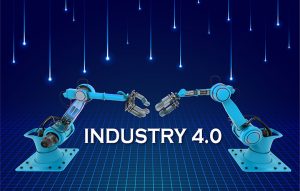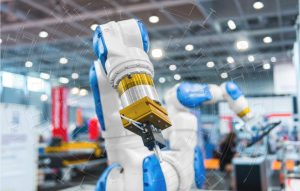With Ripal Vyas, President, Softweb Solutions Inc
Since the industrial revolution, manufacturing has been life-changing for enterprises and countries. With automation in manufacturing, there are many opportunities to drive economic growth and bring prosperity. The Internet of Things (IoT) is transforming almost every industry and so is manufacturing.
The Internet of Things is the network of connected devices, plants and factories with Internet connectivity that is more efficient compared to their non-connected counterparts. It is fascinating to see how sensors and devices connected to the Internet to automate large areas of manufacturing will transform the way things work.
Call it “Smarter Manufacturing” or “The Next Industrial Revolution”, but Internet of Things (IoT) is going to transform everything.
The manufacturing and the legacy
Enterprises have started implementing IoT in different areas and its adoption is an equally critical element of smarter manufacturing. However manufacturing firms have been implementing sensors and computerized automation for the past several years and the sensors and software controlled devices are typically disconnected from IT. The security had been one of the major reasons for these legacy structures that radically differ from highly connected network structures and play a big role in the value propositions of the Internet of Things. While there are some challenges when it comes to implementing open network architectures and data sharing of IoT, the amalgam of Big Data, IoT, and M2M optimization will certainly bring greater opportunities.
IoT in manufacturing
IoT describes a system where devices and sensors are connected with each other in the physical world. IoT will connect and share data from inanimate objects, but will transmit data from sensors connected to living objects, for instance: animals, people and plants.
In manufacturing, IoT will have an increasingly big impact in the industry, with: machines, transportation, sensors, equipment, processing units, containers, materials, plants, computers, mobile devices, software, buildings, cloud technology, people, processes, etc.
All are becoming interconnected with evolving technologies to achieve better outcomes in manufacturing. It will put production, supplier data and customer demand in context in the first place, which in turn will lead to increased productivity, faster response times, and lower costs. Overall, it is going to trigger a paradigm shift in manufacturing.
Impact of IoT in manufacturing
Data collection
Data will be collected from the connected sensors and computerized devices for further analysis. Data security is a big concern when it comes to storing the application securely. In such a scenario, a cloud infrastructure fits perfectly and provides both efficiency and flexibility for companies to leverage this information and put it into action.
Benefits to small companies
Reasonable pricing for both connectivity and IoT-enabled devices generate new business opportunities for manufacturers of all sizes. Many large companies have already started experimenting with sensors and connected devices, small companies now have the opportunity to benefit as well.
Low Maintenance
One can easily monitor and manage assets remotely which then improves operations by accelerating decision-making. Increased uptime and reliability had been the biggest concern for manufacturers, which now can be achieved with IoT. Automating the architecture of manufacturing systems and connected things dramatically increases the flow of information and boosts efficiency. IoT enables monitoring devices in real-time and improves equipment uptime to minimize operational costs. With wearable devices combined with IoT technology, manufacturers can have better visibility and decision-making, which can cut costs and enhance equipment performance. For example, Google Glass is already used by many companies for asset management, capturing images and videos of problems, scanning QR codes, and job analysis.
The increasing presence of IoT in manufacturing will also stimulate adoption of enterprise mobility. There is a huge scope for the growth of IoT as mobile devices are increasing and becoming a common part of the workplace. For more information on how IoT can help your organization, click here.
Originally Featured on ITA
Softweb Solutions
866-345-7638
info@softwebsolutions.com
How IoT will Transform the Manufacturing Industry
Need Help?
We are here for you
Step into a new land of opportunities and unearth the benefits of digital transformation.








